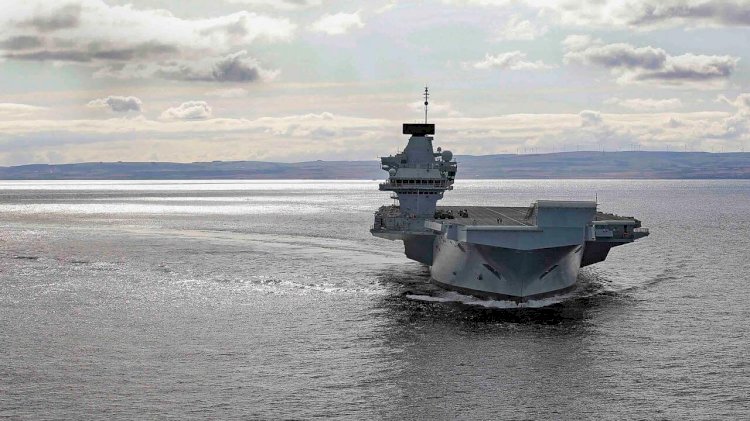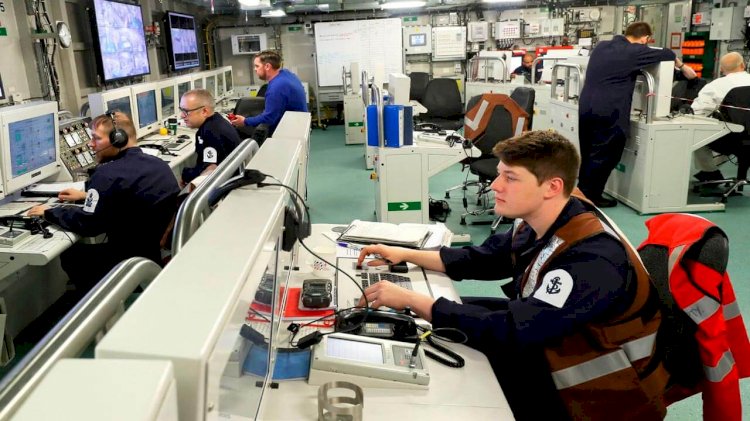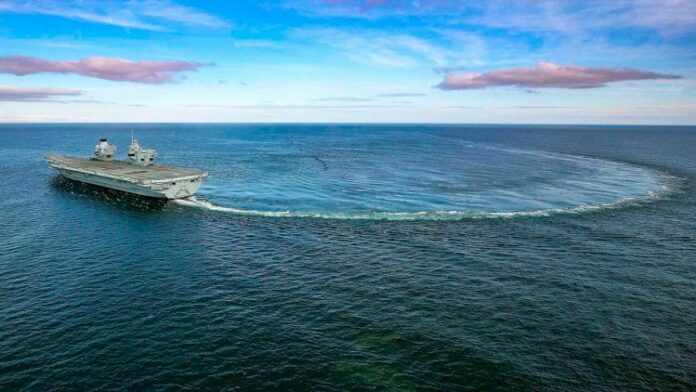Britain's newest aircraft carrier has hit top speed as she tested her engines to the max in the North Sea.
HMS Prince of Wales thundered through the sea at 25 knots as her diesel generators and gas turbines were pushed to full throttle during only her second week of trials.
It took almost all the 109 Megawatts of power – enough to meet the needs of a city the size of the carrier’s home of Portsmouth – the six engines generate to propel the 65,000-tonne warship along at full speed.
And it required another two miles of clear sea to bring the 280-metre-long aircraft carrier to a stop again – such is the momentum generated by the engines running flat out.
Overseeing the full speed trials was Warrant Officer Rob Firth who made certain the leviathan gradually increased speed until she topped out at over 25 knots:
“I felt privileged to be the first Propulsion Warrant Officer to take HMS Prince of Wales to full power making use of the majority of her 109 megawatt generation capacity – but this couldn’t have been achieved without the considerable effort of the whole department.”
The carrier is powered by four diesel generators and two gas turbines, run by the 170-strong marine engineering department – one third the size of the equivalent department on the Navy’s last conventional carrier, HMS Ark Royal, which left service 40 years ago.

Rather than be covered in oil and grease like stokers of old, the engineers in Prince of Wales are is more likely to be found typing on a keyboard or using touch-screen technology to control the Integrated Platform Management System.
It monitors and operates the generation, propulsion and fluid systems that provide the ship’s company of up to 1,600 people with the ‘hotel services’ (fresh/hot/cold water, electricity, air-conditioning, sewage and rubbish systems) as well as powering the engines, sensors and weapons systems on the UK’s most advanced warship. Engineering Technician Connor Cope said:
“The ability to operate the myriad of complex systems on such a huge scale with so few people is highly dependent on modern technology.”
The ship is building on the experience of her older sister HMS Queen Elizabeth, currently in the USA for F-35 Lightning jet trials, plus extensive training on simulators ashore and on board and tests throughout her nine-week period of trials in the North Sea.
Aside from more than 600 sailors, led by Commanding Officer Captain Darren Houston, there are around 400 civilian contractors to bring the engineering systems, radars, communications and essential systems to full working order before the vessel is officially handed over to the Royal Navy in December.
The initial focus is on the ship’s engineering/propulsion systems, hence the speed trial.
Commander Peter Buckenham, who heads the department, said:
“I am immensely proud of the achievements of the marine engineering team. From the very beginning they have rallied, bringing together the wisdom and experience of mature watchkeepers, the enthusiasm and thirst for knowledge of the junior engineering technicians and our close relationship with our industrial colleagues. The culmination of these efforts and the sheer dedication over the past three years have brought us to this historic moment.”
HMS Prince of Wales continues her trials throughout the autumn – with short breaks planned in Invergordon to take on fresh supplies – before making her debut in Portsmouth, followed by a formal commissioning in December.




